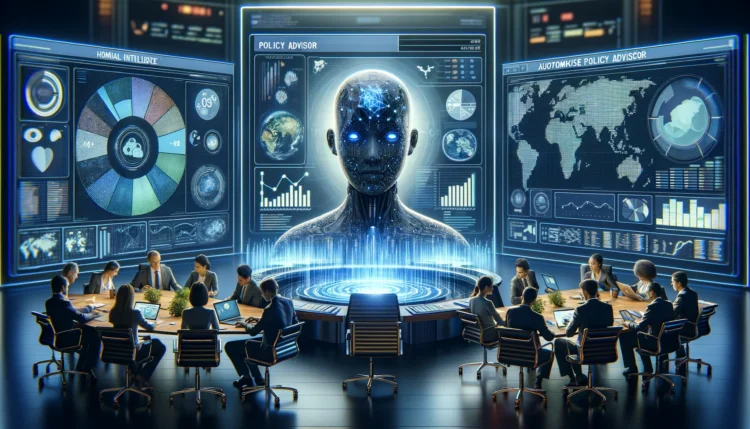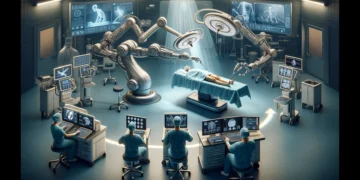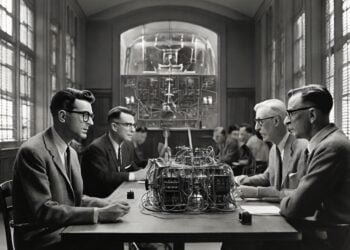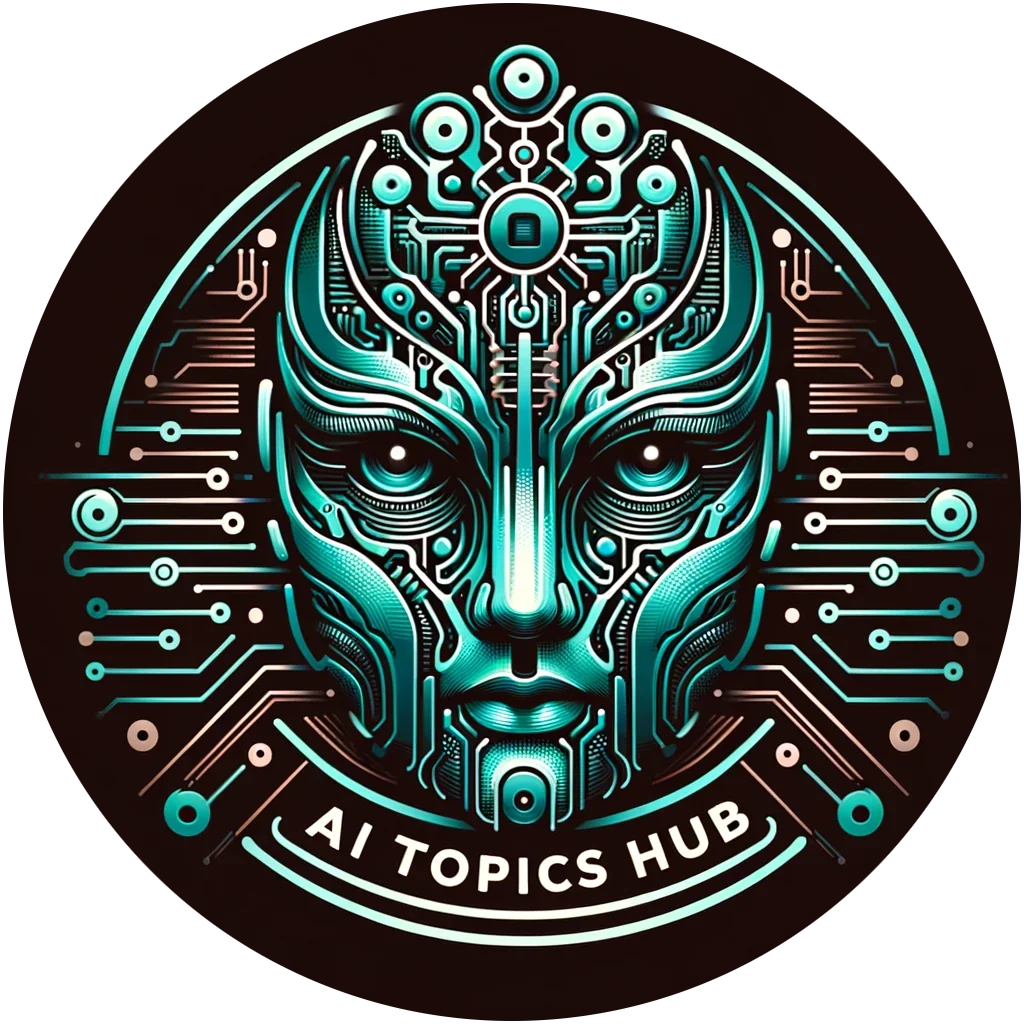The pursuit to replicate or surpass human cognitive abilities through technology has led to the development of two distinct concepts or types of AI within the domain of artificial intelligence (AI): Narrow AI, also known as Weak AI, and General AI, also known as Strong AI or Artificial General Intelligence (AGI). These classifications emerge from a fundamental question at the heart of AI research: How can we create machines that think? The answer, nuanced and evolving, branches into these two paths, each with its unique ambitions, capabilities, and current states of realization. This introduction explores the rationale behind the distinction between Narrow AI and General AI, shedding light on the technological, practical, and philosophical underpinnings that define their separate trajectories in the search to achieve artificial intelligence.
Table of Contents
The Genesis of Narrow AI
Narrow AI, also known as Weak AI, is the practical manifestation of artificial intelligence technologies today. It is born out of a pragmatic approach to AI, focusing on designing systems that excel in specific tasks by processing data, recognizing patterns, and making decisions within a limited domain. The development of Narrow AI is driven by current technological capabilities, immediate needs, and commercial applications. It encompasses systems that range from voice recognition assistants like Siri and Alexa to sophisticated diagnostic tools in healthcare. The rationale for Narrow AI is its attainability with existing technology and its capacity to address specific challenges, enhance efficiency, and improve outcomes in various sectors. It represents a focused effort to push the boundaries of what machines can do, optimizing them to perform tasks that require human-like intelligence, albeit in a restricted context.
The Vision of General AI
In contrast, General AI, or Strong AI, represents the ambitious end-goal of artificial intelligence research: to create machines that possess the ability to understand, learn, and apply knowledge across a broad range of tasks, mirroring the generalized cognitive abilities of humans. The pursuit of General AI is driven by the desire to achieve a form of machine intelligence that can adapt, reason, and solve problems in an autonomous, flexible manner, similar to a human being. This vision encompasses not just the replication of human intelligence but also its augmentation, opening possibilities for tackling complex global challenges, advancing scientific discovery, and exploring new frontiers in technology and creativity. The quest for General AI is as much a philosophical endeavor as it is a technological one, raising questions about the nature of intelligence, consciousness, and the future of human-machine interaction.
Why Both Are Essential
The distinction between Narrow AI and General AI is not merely academic; it reflects the dual pathways through which AI can evolve and impact our world. Narrow AI offers immediate benefits, transforming industries, enhancing productivity, and creating new opportunities for innovation within defined parameters. It represents the here and now of AI, where tangible progress is being made. On the other hand, General AI embodies the future potential of AI, a horizon that, while distant, guides research and sparks imagination about what could be possible.
Together, these concepts encapsulate the breadth of aspirations in AI research, from solving practical, day-to-day problems to pursuing the ultimate creation of an artificial general intelligence. Understanding why we have both Narrow AI and General AI helps in appreciating the multifaceted nature of AI research and development, recognizing the achievements made thus far, and acknowledging the long road ahead in achieving a future where machines can truly think like humans.
Narrow AI: Transforming the World One Task at a Time
In the rapidly evolving landscape of technology, Narrow AI stands as a testament to humanity’s ingenuity, a branch of Artificial Intelligence (AI) that is both profoundly impactful and specifically tailored. Unlike its theoretical counterpart, General AI, which remains a vision for the future, Narrow AI is the reality of today, powering advancements and innovations across various sectors. This article delves into the depths of Narrow AI, exploring its definition, capabilities, limitations, and real-life applications that underline its transformative potential.

Understanding Narrow AI
Narrow AI, also known as Weak AI, refers to artificial intelligence systems designed to handle a specific task or a limited range of tasks. These systems operate under predefined rules and constraints, exhibiting intelligence within their narrow domain. They lack consciousness, self-awareness, and the general cognitive abilities attributed to humans or the envisioned capabilities of General AI.
Capabilities and Limitations
Narrow AI excels in its designated tasks, often outperforming humans in terms of speed, accuracy, and efficiency. It leverages vast amounts of data and sophisticated algorithms to learn from patterns, making decisions or predictions within its scope. However, its intelligence is confined; it cannot apply its skills beyond its programming or adapt to tasks outside its domain. This limitation underscores a fundamental characteristic of Narrow AI: it is a tool, honed for specific applications, without the broader understanding or adaptability associated with human intelligence.
Real-Life Applications of Narrow AI
Narrow AI’s practicality shines in its diverse applications, revolutionizing industries, enhancing everyday conveniences, and solving complex problems. Here are some notable examples:
Virtual Personal Assistants
Virtual assistants like Siri, Alexa, and Google Assistant have become ubiquitous in modern life. Powered by Narrow AI, they can perform tasks such as setting reminders, playing music, providing weather updates, and answering questions. These systems utilize natural language processing (NLP) and machine learning to interpret voice commands and learn from user interactions, offering personalized responses and assistance within their programmed capabilities.
Healthcare Diagnostics
In healthcare, Narrow AI is making strides in diagnostics, enabling faster, more accurate analysis of medical images. Tools like IBM Watson for Health analyze data from medical records, images, and research articles to assist doctors in diagnosing diseases such as cancer more quickly and with greater precision than traditional methods. These systems rely on pattern recognition and data analysis, tailored to specific medical domains.
Autonomous Vehicles
Autonomous vehicles, such as those developed by Tesla and Waymo, use Narrow AI to navigate roads, recognize obstacles, and make driving decisions. These vehicles integrate various AI technologies, including computer vision, sensor fusion, and machine learning, to process inputs from cameras and sensors, allowing them to understand their environment and operate safely within specific contexts, like highway driving or urban navigation.
Financial Services
In the financial sector, Narrow AI is employed in fraud detection, algorithmic trading, and personalized banking services. Systems analyze transaction patterns to identify unusual behavior indicative of fraud, reducing losses for banks and their customers. Similarly, AI-driven trading algorithms can analyze market data to make trading decisions at speeds and volumes unattainable for human traders.
Content Recommendation
Streaming services like Netflix and Spotify use Narrow AI to personalize content recommendations, enhancing user experience. By analyzing viewing or listening histories, these systems identify patterns and preferences, suggesting movies, shows, or music tracks that users are likely to enjoy. This application of machine learning ensures that recommendations remain relevant and engaging, keeping users connected to the platform.
The Future of Narrow AI
As technology advances, the capabilities and applications of Narrow AI are expected to expand, driving further innovation across industries. While it operates within defined limits, its impact is anything but narrow, offering solutions to specific challenges and enhancing human capabilities in targeted ways. As we continue to harness and refine this technology, the potential for positive change is immense, promising a future where Narrow AI continues to transform the world, one specialized task at a time.
In conclusion, Narrow AI represents the practical and present face of artificial intelligence. Its focused applications are already reshaping industries, improving lives, and offering glimpses into a future where technology and human ingenuity converge to solve the world’s most pressing challenges. As we stand on the brink of this technological revolution, the journey of Narrow AI is far from complete, promising even greater advancements and innovations on the horizon.
General AI, also known as Strong AI
General AI, often referred to as Strong AI, represents a futuristic vision of artificial intelligence that has captured the imagination of scientists, engineers, and science fiction writers alike. Unlike Narrow AI, which is designed to perform specific tasks, General AI encompasses the broader ambition of creating machines capable of understanding, learning, and applying knowledge across a wide range of tasks, mirroring human cognitive abilities. This article explores the concept of General AI, its theoretical underpinnings, potential capabilities, challenges in its development, and the hypothetical examples that illustrate its transformative potential.

The Vision of General AI
General AI conjures images of sentient machines that not only execute tasks but also possess awareness, emotions, and the ability to understand the world as humans do. It’s an AI that can learn any intellectual task that a human being can, but with the added advantages of computational speed and precision.
Defining General AI
General AI is defined by its capacity for generalized understanding and action. It implies an AI that can:
– Learn from limited experience or instruction.
– Transfer knowledge across different domains.
– Solve problems without specific prior programming.
– Adapt its understanding and responses based on new information or changes in the environment.
Theoretical Underpinnings and Capabilities
The development of General AI would require breakthroughs in understanding human consciousness, cognition, and the brain’s architecture. It would necessitate algorithms capable of abstract thought, reasoning, and problem-solving across disciplines, from arts and humanities to science and technology.
Potential Capabilities and Impact
The capabilities of General AI could be vast and varied, impacting every aspect of human life:
– Universal Problem Solving: From climate change to healthcare, General AI could provide innovative solutions to complex problems by analyzing data and generating insights beyond human capability.
– Personalized Education: It could tailor learning experiences to individual needs, adapting in real-time to optimize teaching methods for maximum understanding and retention.
– Advancements in Science and Technology: General AI could accelerate research in fields like physics, chemistry, and biology, discovering new materials, medicines, or even theories of the universe.
Challenges in Development
Creating General AI poses significant technical and ethical challenges:
– Technical Complexity: Mimicking the vast, interconnected neural networks of the human brain and its capacity for abstract thought and emotional understanding is a monumental task.
– Ethical Considerations: Issues of morality, free will, and the potential for AI to make decisions that could harm individuals or societies raise profound ethical questions.
– Existential Risks: The development of General AI brings concerns about control, safety, and the long-term impact on humanity. Ensuring that General AI aligns with human values and interests is paramount.
Hypothetical Examples of General AI
While real-life examples of General AI do not yet exist, hypothetical scenarios can help illustrate its potential:
– A General AI Research Assistant: Imagine an AI that can assist researchers across fields, from conducting literature reviews to designing experiments and interpreting data, significantly accelerating scientific discovery.
– A Personal Life Coach: A General AI could act as a life coach, understanding an individual’s goals, motivations, and challenges on a deep level, providing personalized advice and support for personal development, career growth, and health.
– An Autonomous Policy Advisor: This AI could analyze vast amounts of economic, social, and environmental data to propose policies that optimally balance growth, sustainability, and social welfare.
The Path Forward
The journey toward General AI is filled with both promise and peril. As researchers push the boundaries of technology, society must engage in a critical dialogue about the implications of creating machines with human-like intelligence. Balancing innovation with ethical considerations and safeguards is crucial to ensure that General AI, if achieved, benefits humanity and reflects our highest values and aspirations.
In conclusion, General AI remains a horizon we are yet to reach, a beacon guiding advancements in artificial intelligence toward the ultimate goal of creating machines that can truly understand and interact with the world as humans do. Its potential to revolutionize every aspect of our lives is unparalleled, making it one of the most exciting and daunting challenges of the 21st century.
Takeaways:
- Distinct Roles and Impacts: Narrow AI and General AI serve distinct roles within the realm of artificial intelligence. Narrow AI focuses on specialized tasks, enhancing efficiency and solving real-world problems with precision and speed. In contrast, General AI embodies the ambition to create machines capable of generalized understanding and reasoning across a broad spectrum of tasks, mirroring human cognitive abilities.
- Practical Applications vs. Theoretical Ambitions: While Narrow AI is already integrated into various sectors—improving healthcare diagnostics, powering virtual assistants, and driving autonomous vehicles—General AI remains a theoretical ambition. The pursuit of General AI challenges us to reimagine the future of technology and its potential to solve complex global challenges, advance scientific discovery, and revolutionize learning and personal development.
- Ethical Considerations and Societal Implications: The development and application of both Narrow AI and General AI raise profound ethical questions and societal implications. Issues surrounding privacy, autonomy, job displacement, and decision-making underscore the need for responsible AI development that aligns with human values and ethical standards.
Most Important Next Action for you:
Engage in the AI Ethics Dialogue: The most crucial action for you is to actively participate in ongoing discussions and debates about the ethical implications of AI. Whether you’re a technologist, policymaker, educator, or simply an interested observer, contributing to the dialogue on how AI should evolve responsibly ensures that future developments in both Narrow AI and General AI benefit humanity as a whole. Engaging in these conversations helps to shape the frameworks and policies that will guide the ethical development and deployment of AI technologies, ensuring they align with societal values and contribute positively to our collective future.















